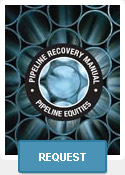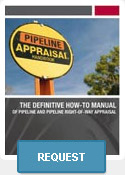Landowner Relations and Pipeline Recovery
I have met very few landowners who have not been pleased to know that I am removing a pipeline that crosses their property. Those that don't want it removed generally did not know it was there or feel it does no harm to leave it in place or think that to remove it would do more harm than good.
Many times encroachment in the form of houses, barns, ponds, and agriculture such as orchards are a reason for leaving a pipeline in place in the mind of a property owner as well as the pipeline salvage company. In almost all cases, I am removing the pipeline for salvage value only. It is just not worth it to tear up a garden or an orchard or a corral to salvage some some steel pipe. It is another matter when there is a critical need to remove the line such as potential hazards or some environmental problem, but generally it is easier and more economical financially and emotionally to leave it where it is.
Encroachment or the practice of building pens, corrals, fences, playgrounds, houses, barns, lakes and ponds on top of pipelines will not occur with proper oversite on the part of pipeline right of way maintenance departments.
It would only require a bi-annual inspection or fly by to find the violator and the potential liability would be eliminated. Left alone, the pipeline company is asking for serious problems in the form of lawsuits from potential accidents on the right of way which is an easement owned by the pipeline company. In addition, the pipeline owner might actually lose their right of way from negligence and lack of maintenance. Does the question of " squatter's rights" enter the discussion?
When I buy or otherwise obtain a pipeline for removal from a pipeline company or other current owner, my first act is research the ownership records to get current owner's addresses and then obtain their telephone numbers. Then depending on the number of parties involved, I will call or write. The letter or conversation might go something like this:
"Mr. Johnson, Pipeline Equities crews will entering your property sometime in the next forty five days to remove an abandoned (or soon to be abandoned) crude oil pipeline. The line was laid in the nineteen twenties (or thirties or forties) and might pose a problem in the future and needs to be removed. We will be on your property no more than one to three days and we will put everything back the way we found it or better and according to the right of way agreement.
"When we complete the job, Pipeline Equities will restore the right of way ownership back to you and pay all expenses for doing so including filing fees and any legal expense that might ensue."
I might add that we will call when we are near the property in order to get gate keys or combinations, or other special instructions we might need while we are on his property.
On many occasions, the question of money will come up from a landowner, but more often from a tenant farmer or leasee.
These parties gain nothing from a right of way release and they really don't care. They do try generally to get paid something for so called "damages".
There are provisions for crop, timber, or pasture disruptions. These remedies are sometimes written into the right of way agreement. There are formulas available to determine actual damages to a certain type of crop and ways to determine actual crop area acreage damaged. Most all of the time, matters such as these are covered in the language of the easement document. Sometimes to sooth the feathers of the landowner or leaseholder, it is good business to offer an hour or two of dirt work with our excavator or bulldozer. Other times a joint or two of pipe for culvert can buy ton of good will.
The best remedy and guarantee for good relations with a landowner is to treat them and their property with respect.
We don't want to be on a landowner's property any more than they want us there so the idea is to get on and get off rapidly and leave the right of way and fences in good repair. We always try to "mound" the area of pipe removal to account for any settlement that might occur.
I have found nothing better in my experience of removing over seven million feet of pipelines than the promise and fulfillment of returning the easement to the property owner at my expense. To the landowner, it means they will never be bothered again by intruders on that stretch of land, at least.
Above all, do what you say you will do.
Article released in
September 2, 2008
Quick Links
- Services
- Tags
- Abandoned Pipelines
- Asbestos Testing Procedures
- Energy Prices Push Appraisal Demand
- Landowner Relations
- Line Pipe: New vs. Used
- Perceived Asbestos Threat
- Pipeline Acquisitions
- Pipeline Appraisal Methods
- Pipeline Broker
- Pipeline Deconstruction
- Pipeline Recycling
- Pipeline Right of Way
- Pipeline Sales
- Secondary Steel Pipe Applications
- Skills of Right of Way Acquisition
- Structural Pipe: Uses & Applications
- Tank Demolition & Clean Up
- Used Pipe: Uses & Applications
- Recent Articles
- Popular Articles

